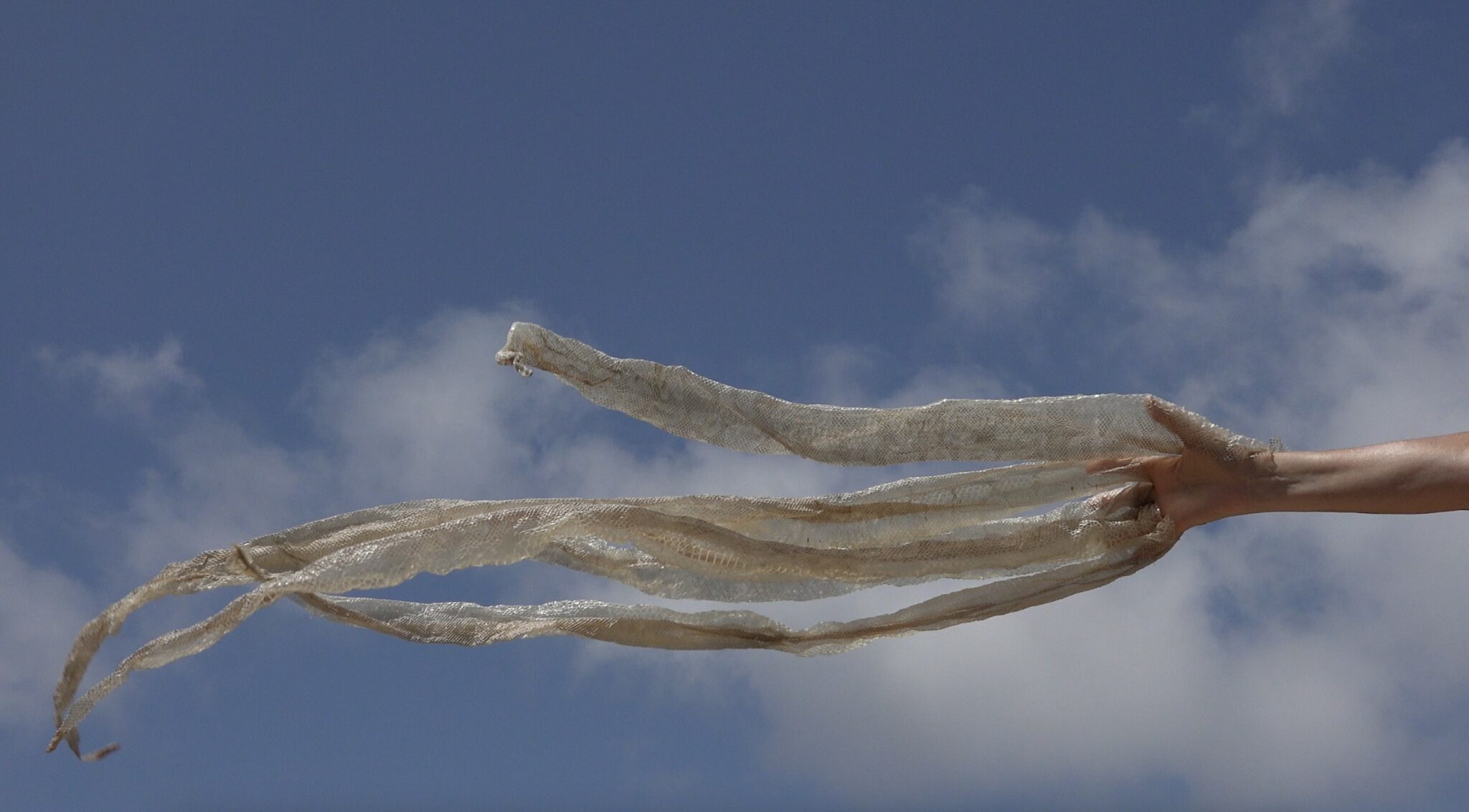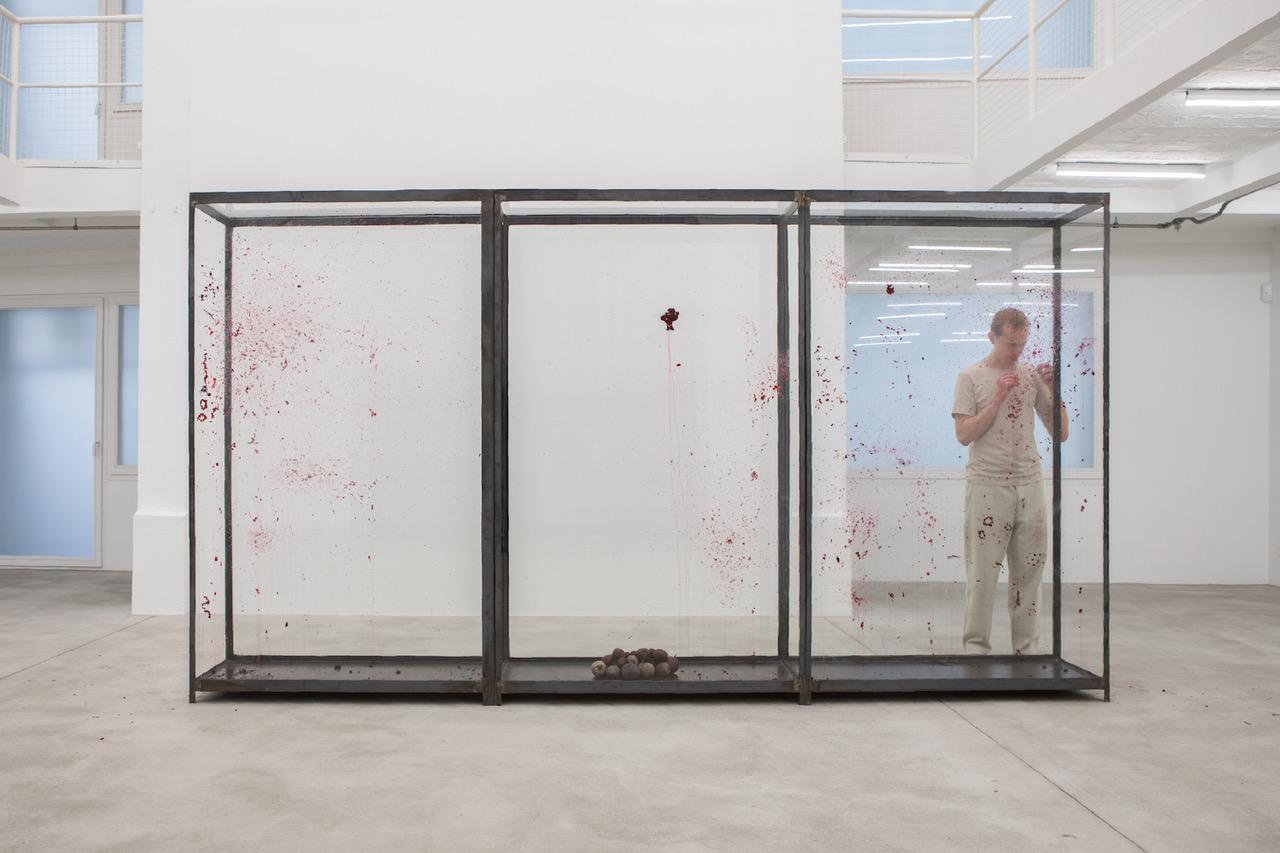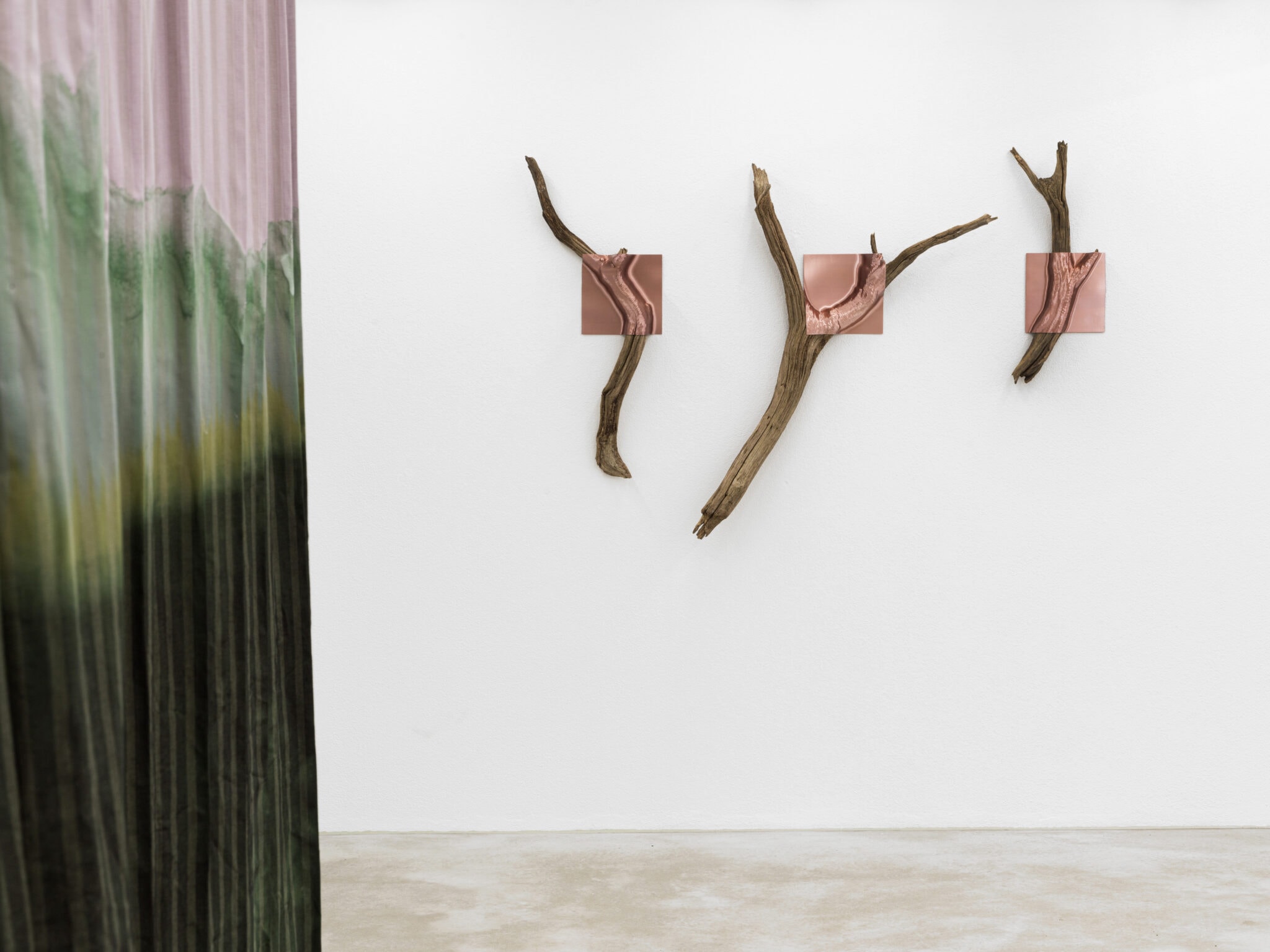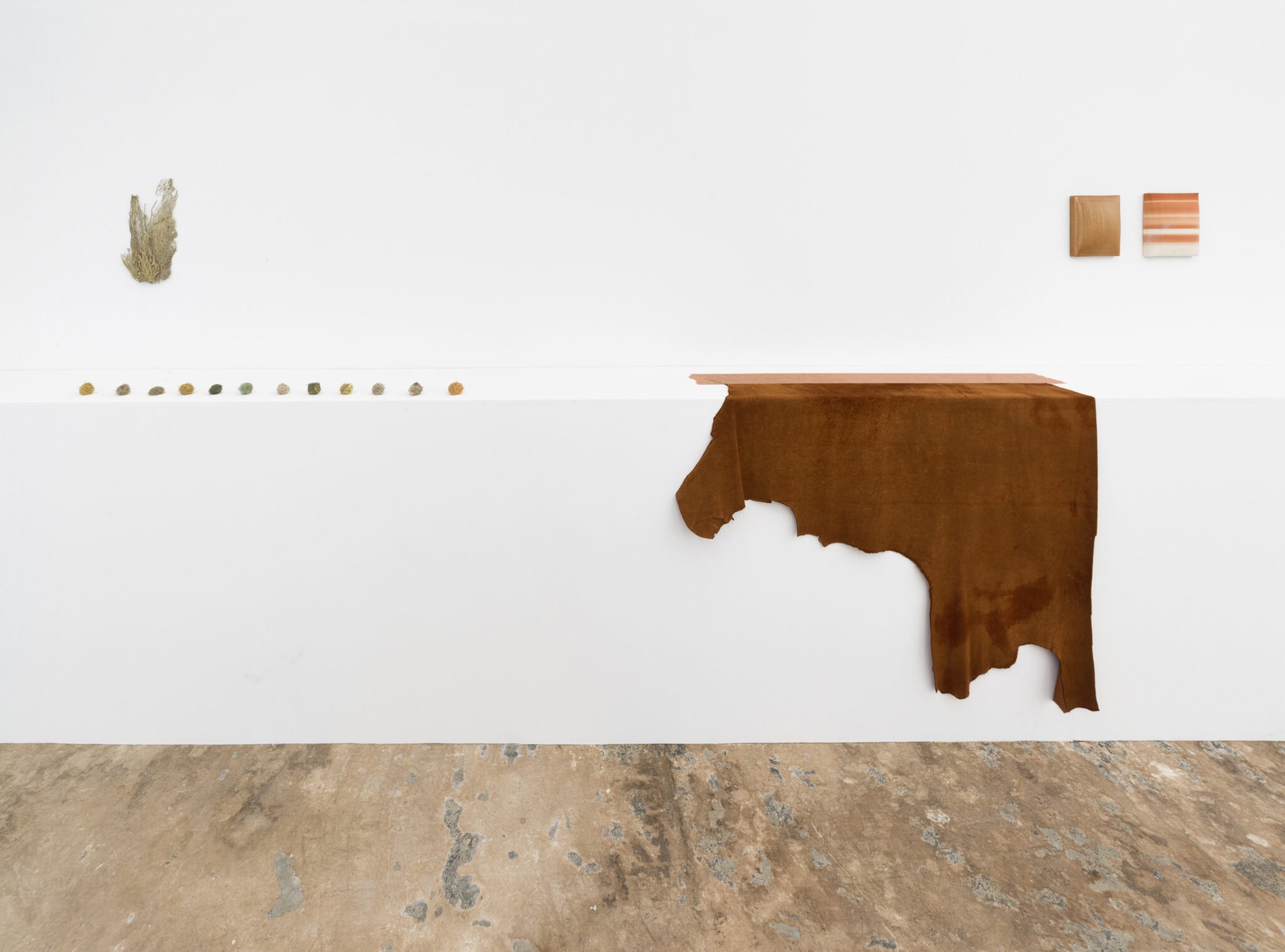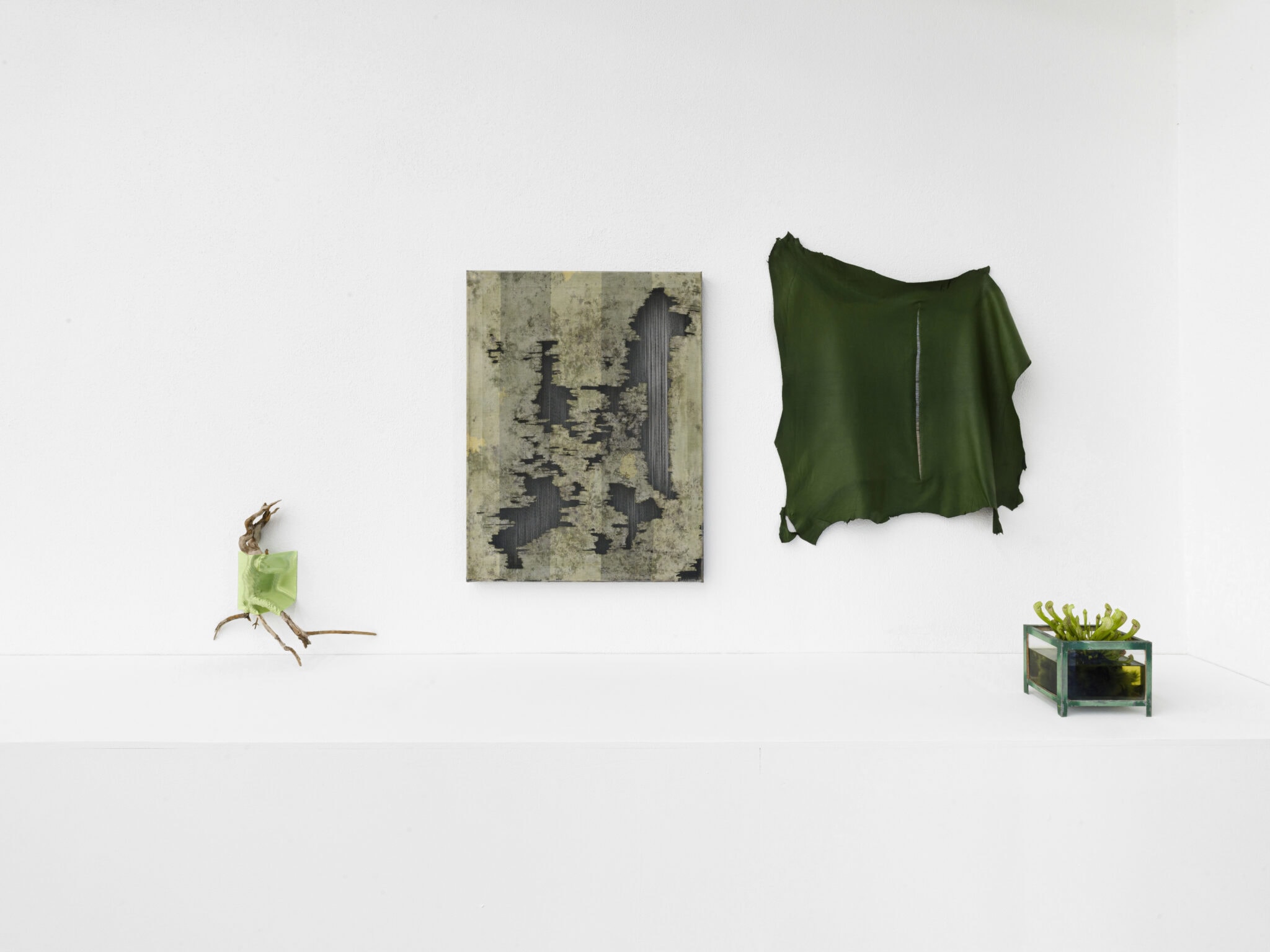In Animal Methods, Dekyndt presents a new body of work with which she explores the comparisons and differences between animals and humans, or, to be more precise, animalistic features within humans and manners within animals. These explorations should be considered against the backdrop of the lasting Ukraine war, as well as other ever-escalating conflicts of today. With the works, Dekyndt reflects on how violence found in the animal kingdom merely occurs to protect a small piece of territory or for nutrition. Going to war to revenge a people in all sorts of cruel ways or actively expand territory is a deeply violent characteristic predominantly reserved for humans.
In the video Animal Methods, from which the exhibition takes its title, the shed skin of poisonous snakes is hold out to the wind like a flag, combining together symbols of renewal, the skin, and perhaps a variation of a white flag, a symbol of bringing peace. A snake only uses its poison when it is threatened or attacked, unlike offensive characteristics of humans. The video’s gentle movements of the skin pieces are meditative, while the hand subtly starts shaking after a while, as if referencing how enduring it apparently is to uphold peace.
Further references to and uses of toxicity recur in the exhibition. For Green of Schweinfurt (2024), Dekyndt applied a green dye that resembles a pigment produced with arsenic to a large curtain. In the 19th century, arsenic-based shades of green came in fashion for all sorts of purposes: to dye dresses, to paint walls or create wallpaper and as oil paint for artists. After the consequences of the highly toxic chemical element became gradually known, its use ran out of favor. The centrality of the object in the exhibition and the reference to arsenic-based pigments can be seen as a nod to proximities of toxicities on numerous levels that might be present, either clearly or latently. Various other works in the exhibitions have been named after fictive characters that died because of being poisoned, like Laertes, King Claudius and Cymbeline, and dramatize this fatal proximity further.
The looming presence, or potential threat, of intoxication is part of Phantom Thread, The Sixth Sense, Romeo and Imogen too. The leather as main material of the pieces has been treated with alum stone that can be poisonous when ingested. Apprehension also tends to become palpable when observing the surfaces of these works and encountering the rips in the leather—a material that once was an animal’s skin. The rips are meticulously stitched together again with a large number of nails, creating a tension that references the exertion needed to upkeep a surface, fabric, appearance or situation.
The works Langhian (Zwemkau) and Conician (Dordognia) largely consist of petrified wood—a tree or tree-like plant that has been replaced by stone via a mineralization process. The fossil can be millions of years old and remains a 3D representation of the original organic material. Intrigued by this process, Dekyndt enhanced the outer layers of the petrified wood pieces. For Langhian (Zwemkau), of which smaller parts have been cut or worn off over time, the artist used AI to generate a model of how it looked as the complete prehistoric piece. She then 3D-printed this layer with a material based on coffee and applied it. Conician (Dordognia) has been enhanced with a similarly printed layer made from a hybrid metal material that resembles water or mercury. In this way, Dekyndt imagined how these pieces would look if they were more complete, better conserved or further developed, as a homage to all the things that are lost, not yet done or left unfinished.
As such, a key concept to understanding the work of Dekyndt is the notion of agency, which is unquestionably visible in the movements and actions of the performer during the opening days of Animal Methods. Moving bestially yet elegantly through the space, the performer chews on fruit and vegetables that can be inedible or even toxic, depending on how they are prepared. Transformed into a paste in his mouth, he then spits it out on the transparent glass surfaces of display cases, thereby playing with feelings of attraction, repulsion, apprehension and abjection. Here, Dekyndt raises questions about what is considered food and non-food for humans and for animals, how they both asses what types of food are dangerous or safe, and how they both are culturally or taxonomically categorized according to their nutrition, with which she ultimately asks what kind of customs of humans and animals we find acceptable or not.
Text by Léon Kruijswijk, Curator at KW Institute for Contemporary Art
